It’s difficult to specifically pinpoint when the term “bro” started to make its rounds in the fitness community. Regardless, the term is here to stay…and it’s not nice. You see, the term “bro” is often used as a pejorative to describe something that is based on “machoism”, “jockish behavior”, or “party types”. Things like “bro-science” or “bro life”. What we’re talking about today are the infamous “bro splits”.
In a nutshell, a bro split is just a way of designing a workout program where you concentrate on a specific muscle group per day. Sounds simple; but are bro splits any good? Are they Bad? Can anyone do a bro split or just bros?
If you have these questions (or more), read on because this article will answer everything you ever wanted to know about this infamous body split. And if you decide to take a bro-split journey, we have the best possible bro split workout routine to follow (backed by science).
Table of Contents:
- What is a bro split?
- Common training methods used with a bro split
- Are bro splits effective for building muscle? Strength?
- Benefits of bro splits
- Problems with bro splits
- The best bro split workout plan (backed by science)

What Is A “Bro” Split?
As mentioned above, a bro split is simply a training split where a trainee would concentrate on training one or two muscle groups a day. Since you only train a couple of muscles each day, bro splits plans on you training 5 or 6 days per week to hit every muscle every week. Still, the goal of every bro split that has ever been written is muscle hypertrophy, without a doubt.
The bro split is one of the oldest and most widely used splits to ever exist. Even today, if you were to walk into a random gym and take a brief survey of what type of plan people were following, a good majority would likely say, “I’m doing a bro split, bro .” And there’s a good reason why.
As said, the bro split has been around since the golden age of bodybuilding, and it’s the one thing people know if they know anything about the gym. Its popularity is so deep in modern culture that most people just assume that this is the way you’re supposed to train in the gym. For example, the MTV hit “Jersey Shore” had a bunch of bros doing bro splits at the gym. Admittedly, they had pretty good physiques, so someone watching TV sees this and assumes this is what you do.
Common Training Methods Used With Bro Splits
Other than training one muscle group per day, another main component of bro splits is their heavy use of specialty sets. For example, it’s not uncommon to see a guy with a set of 5 dumbbells lying at his feet as he gets ready to work through a killer drop set. Here are some of the common training methods used.
Drops Sets:
As mentioned above, bros love doing drop sets. A drop set consists of lifting a certain amount of weight until nearing fatigue. You will then stop quickly and lower the weight somehow; strip weight from a barbell, change the pin on a machine or grab a smaller weight.
The idea is to add more volume and bring the muscle to total failure.
Supersets:
Supersets are when you perform two similar exercises back to back. However, they are different enough to hit the muscle slightly differently. An example would be doing a barbell curl and then rope hammer curls. The idea is to get as much work done in minimal time while changing the pattern to mitigate fatigue.
Forced Reps:
Doing forced reps requires a partner. Then, the partner mentioned above will help you do some reps as you near failure. This is basically like doing drop sets but using someone else to relieve the load.
Heavy Eccentric:
Heavy eccentrics are performed by using a near maximal, maximal, or even supramaximal load. However, the exercise will only consist of the eccentric portion. In reality, the science is pretty solid here with this training style. For one, we are able to generate more force during the eccentric portion of a lift than a concentric. This allows us to use extremely heavy loads when performing a slow and controlled eccentric contraction. Theoretically, this weight can help acclimate the muscle to sign heavier loads.
Still, sports research has discovered that the eccentric contraction is actually more responsible for more muscle damage, thus playing a more significant part in muscle hypertrophy. Lately, the role of muscle damage in muscle hypertrophy is not as straightforward as once thought, but the concept still holds some merit. To be clear, the concentric portion is still very important but taking advantage of this extra force production with the eccentric contraction is a viable method to use in your training.
Training To Failure:
The intent for the majority of the specialty sets is to bring the muscles close to failure. Research is a bit mixed on how effective these methods really are. For example, one study shows that training to failure is effective but only when comparing high loads to low loads. However, other studies have shown that there is no advantage. So what to do?
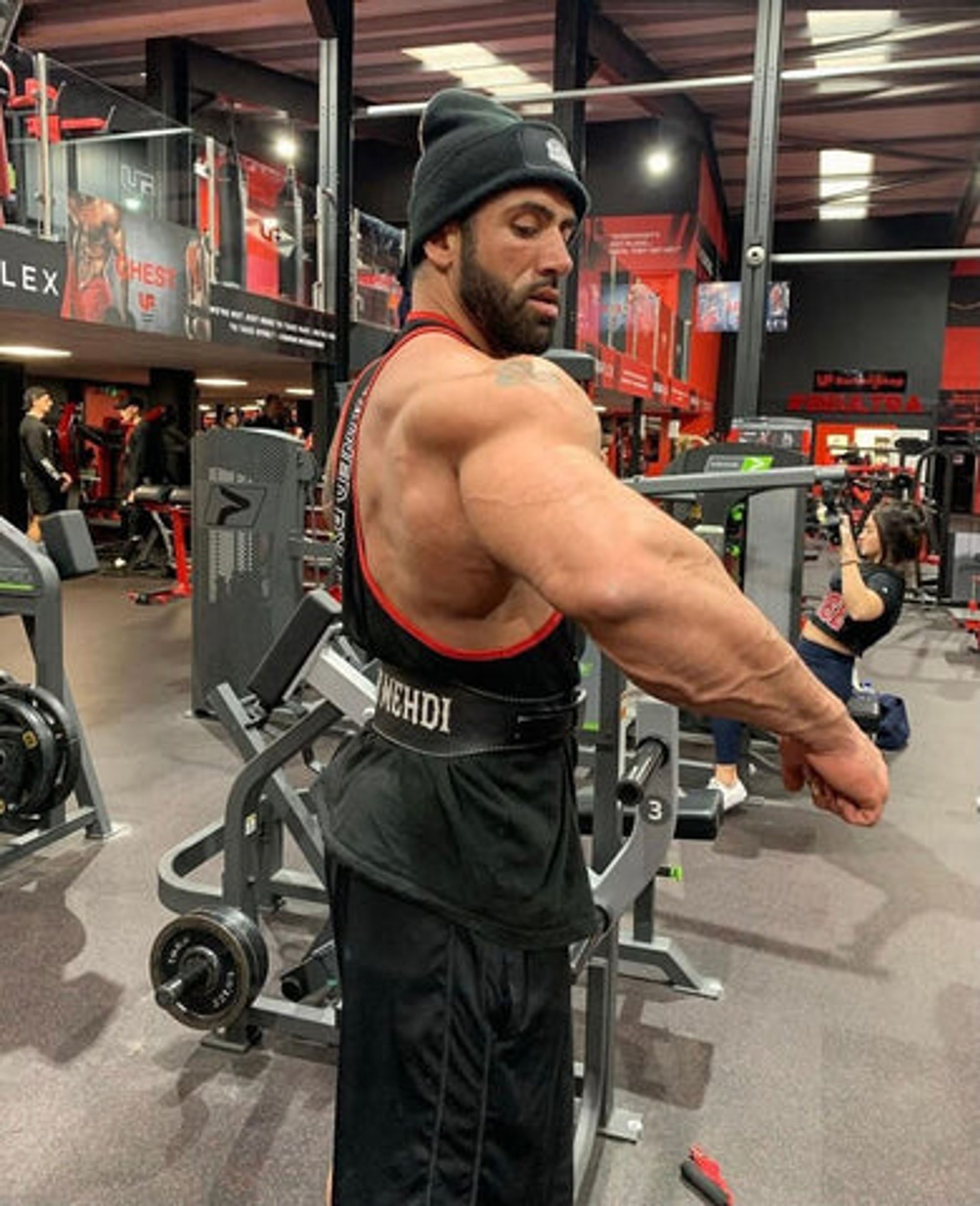
Are Bro Splits Effective?
So this brings us to the first obvious question; do bro splits build muscle? Absolutely! Well, assuming you’re using progressive overload with your bro split! As mentioned above, the bro split is probably the most popular training split there is in bodybuilding. Actually, it’s safe to say that the vast majority of people who have ever gone into a gym have used a bro split at some point in their life; we have!
Quite simply, the bro split would not be so popular if it wasn’t effective. People would stop using it if you couldn’t build muscle on a bro split. They’d stop telling their friends to use it, and trainers would stop putting clients on it. As mentioned above, anything can build muscle if you use progressive overload. Therefore, the real question is “how” effective are bro splits?
They are effective and have some great benefits. However, they could be better. Let’s take a moment and see what's going on.
The Top Benefits Of Bro Splits
Before we talk about the major issues seen in bro splits, we need to talk about the good. Remember, a lot of the trash thrown at bro splits is heavily inspired by this new wave of sports research which has bred this weird elitism in the fitness community that places those following the old ways in a class below. It’s silly and unneeded. Plus, bro splits do have some good positives.
1. Easy Organization That’s Simple To Understand
One of the best things about the bro split is it’s easy to understand. Often, a beginner’s biggest hurdle is simply not knowing what to do when they get in the gym. The bro split solves this in the most basic way possible.
“Ok, today’s Tuesday so I’m training back”. That’s about all there is to it.
Well, ideally, they perform big movements first and then work down to accessories and isolations, but you get the point. At the end of the day, bro splits are the most accessible programs to follow.
2. Teaches Beginners The Basics Of Programming
In conjunction with the above, following a bro split will teach you the basics of programming. You’ll learn what it’s like to keep a schedule and why you need to allow your muscles to rest. And to be honest, that’s more than we can say for a large portion of the people going to the gym who have no idea what they’re supposed to be doing. One of the first lessons you must learn in the gym is to follow a program. While a pretty simple concept, it can create massive gains which is probably one reason bro splits are relatively effective. If you take someone training with no program and compare them to someone training with a program, the one who is using a program will almost always come out on top.
3. Hits Every Muscle Group Sufficiently
When all you have to do is train your “back”, you’re going to hit it from every possible angle there is. And then the next day, legs, chest, arms, etc. You can’t be biased or unbiased to any muscle since your entire session is devoted to it! Let’s say you’re doing an upper day, and you hate training your chest; what do you think will get hit more? Ideally, we have a proper work ethic, but things happen, even if we don’t realize what we’re doing.
4. Allows Plenty Of Recovery
Training on a bro split significantly decreases the chances of you falling victim to overtraining. The defining feature of bro splits is training one muscle during a single session every week. Being so, there’s plenty of time for that muscle to recover before it’s trained again; perhaps too much time but we’ll discuss this below. However, fatigue can still build up from training too much, but since bro splits primarily focus on smaller movements, the chances of this becoming an issue also shrink.
5. Bro Splits Are Fun
Well, as much fun as you can have in the gym. Getting a pump is what bro splits are all about. Destroying a muscle until it’s so engorged with blood that it feels like it’s about to explode. While the awesome gym pics are just a fleeting moment, any guy who says this doesn’t feel awesome is lying (the pump is why pre-workouts are so popular!). Not only does it feel great but it does something on the inside that makes you feel like you could take on the world. Every girl is looking at you and all the guys wish they could be you (or vice versa if you are a lady). While that is almost never the case, you think that’s what going on as getting a pump is fantastic.
6. Bro Splits Are Effective
A bro split can be an effective method to follow if muscle hypertrophy is your primary goal (see below). While it’s simple and operates off old ways of thinking, it still works! This is especially true for new lifters who just need any loading scheme to grow. If a bro split is what gets you in the gym, it’s fine by us. It’s structured, follows basic principles of lifting, and trains the entire body.
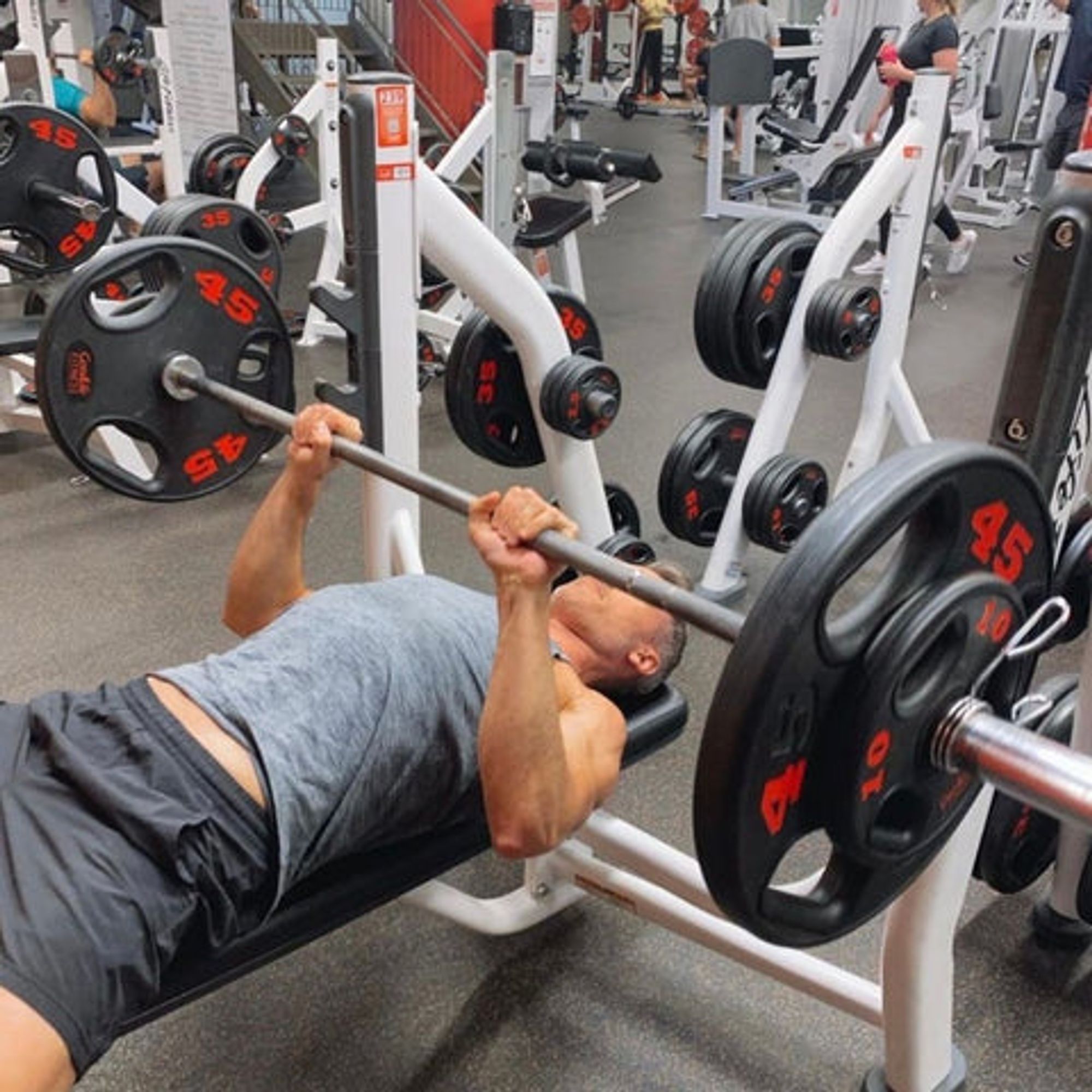
The Biggest Criticisms With The Bro Split
One important lesson to keep in mind regarding fitness is that the most popular trend is almost never the most effective. This is the case with the bro split as well. The bro split is often laughed at as it implies a specific type of person follows it; an undesirable type of person. A loud, obnoxious guy only wants to train biceps and is somewhat lacking in the brain department. This hardly describes the majority of people who follow a bro split and is simply an ad hominem attack. In reality, guys who follow a bro split generally have an awesome work ethic, rarely miss a session, and train hard. That being said, there are a couple of really big issues with the bro split.
1. Too Little Frequency
A bro split only has you train a muscle group once a week, which is believed to be insufficient for optimal muscle growth. This is a problem that strikes the bro split at its core, as this is its defining feature. Training once a muscle once a week used to be the prevailing thought in the gym as it was assumed you could destroy a muscle and then give it a week to fully recover. Well, they do put a significant emphasis on allowing time for recovery, but it’s perhaps too much. You see, during the past years, multiple studies have come out that show your muscles don’t need a full week to recover. In fact, it’s half that. After training, muscles can fully recover sufficiently anywhere between 24-72 hours, which depends on the muscle’s size and how much damage was done.
Still, the whole idea that you need to be fully recovered from training again is a bit silly as your muscles are technically damaged after your first exercise and people keep on training. To be clear, we’re not suggesting you train every day as muscles do need recovery time; we’re merely stating that you don’t need an entire week. According to current studies, the reigning theory is that training a muscle twice a week is optimal for muscle hypertrophy and going a third came may even be advantageous. This keeps your muscles in a continuous state of damage, recovery, damage, damage, damage...instead of what you get with a bro split, damage, recovery, recovery, recovery, damage.
As volume is the main driver of hypertrophy, it’s claimed that frequency doesn’t matter if the total volume is equal. Some studies do back this up but that is not how the real world works. If you only train one muscle a day, you will get fatigued towards the end and just can’t perform a lot of work. Now imagine if you took the bottom half of those exercises and moved them to 3 days later when you’re fresh; now you’re going to do a lot more work. Still, other studies have shown that higher frequency is still better even with equated volume.
2. Little To No Emphasis On Strength Training
The other major problem with bro splits is with the lack of strength training. There’s actually two components of this; one is due to the design of bro splits, and one is due to what’s typically done in real life.
Above, we talked about optimal muscle hypertrophy frequency but didn’t mention strength (check out the differences here!). Again, studies show that training with a higher frequency is optimal for building strength too. This is actually more clear as proper strength training requires the recovery of your neuromuscular system rather than simply muscle damage. While you could make an argument that volume is all that matters for hypertrophy, this can not be said for strength training. Higher frequency is better.
However, this likely isn’t much of an issue as many trainees following a bro split don’t really care about strength. Yes, this is a big blanket statement that isn’t necessarily the split’s fault. Still, for whatever reason, many guys following a bro split exclusively care about muscle hypertrophy. This is an issue as strength and hypertrophy are intrinsically connected, and both should be included in a program. But basically, a bigger muscle can be a stronger muscle that can lift more volume and become a bigger muscle, and the cycle continues. Unfortunately, there’s a severe lack of strength training in typical bro splits.
3. Often Times Lack Of Big Compound Movements
In connection with lack of strength training, there also tends to be a lack of your big foundational movements. We’re talking about things such as:
- Back squats
- Front squats
- Overhead pressing
- Deadlifts
While there is plenty of benching, these other movements (and others) are rarely seen. Again, you easily could include these movements in a bro split, so this is more of an indicator of how bro splits are taught and how they’re used. That being said, if you do a bro split, you’ll likely do what others do, and it doesn’t include big, heavy, compound movements.
4. Tries Too Hard To Isolate Each Body Part = Not Functional
Tied in with the bro split criticisms directly above and below, a bro split’s entire intent is to isolate each muscle group. Unfortunately, our bodies don’t work like that; at least naturally. Our body is a machine that’s composed of many different parts; the chest, back, shoulders, triceps, etc. These parts are designed to work with each other, not in isolation. In fact, this is the definition of functional training which uses exercises to mimic real-world application; pushing, pulling, standing up, etc. When we isolate every body part, we will get a substandard workout merely because we aren’t training the body how it’s supposed to move.
5. Too Many Machines And Isolation Movements
When we train our muscles in a non-functional manner, we try to isolate the muscles. To do this, a trainee will often use a lot of machines and isolation movements. To be clear, we’re not machine haters, and there are plenty that are extremely useful (we love the leg press!), but free weights should always form the foundation of your workout. Again, you could easily use more free weights, but the nature of a bro split steers lifters to the machines.
6. Actually Favors Smaller Muscle Groups
As mentioned above, our muscles are supposed to work together. For example, isolating the chest is virtually impossible as you’re going to still hit the shoulders and triceps in the majority of exercises, even if it is a chest “isolation”. In fact, you’ll almost always use the smaller muscles when you hit the bigger muscles. For example, when you train the chest with a bench press, you’ll also hit the shoulders and triceps. You then have a shoulder day where you perform military presses to hit your shoulders and triceps. Last, you have an arm day where you hit your triceps. Therefore, you hit the chest once, shoulders twice, and the triceps were trained 3 times.
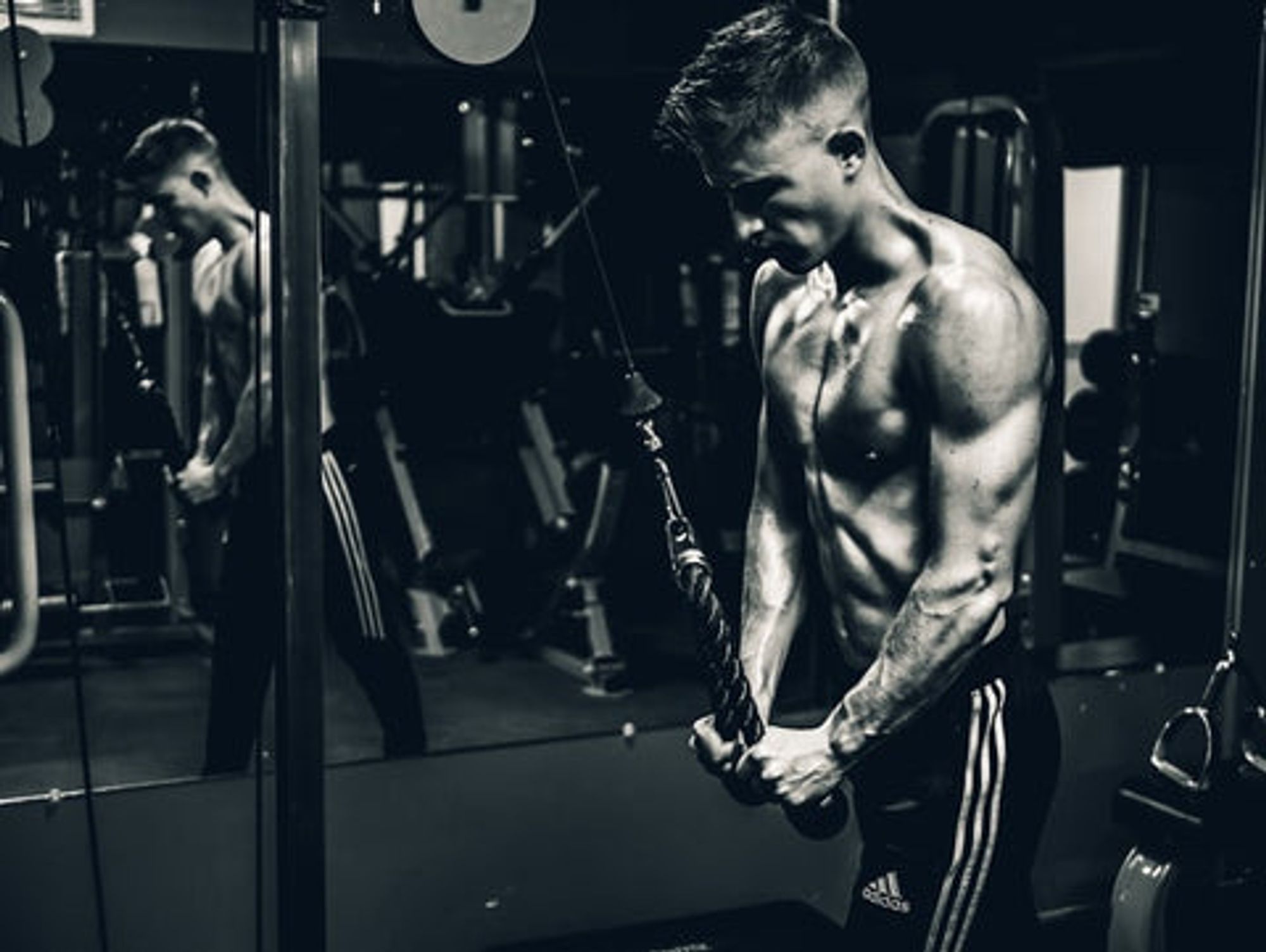
How To Make A Bro Split A “Science-Backed Bro Split”
So now we know all of the common problems when training with a bro split. However, we also know all the benefits, and why people like training with them. Therefore, in order to create a more superior version of the bro split, we need to create a program that preserves the good while making small changes to fix the bad.
Here are some of the things that we are going to alter while still keeping that bro-tastic feel to lifting.
1. Add One Heavy Compound Movement Each Session
The first significant change we’re going to make is to ensure that each session has one heavy compound movement whose entire purpose is to build strength. Don’t freak out too much as new research has shown that our previous ideas about the repetition spectrum in training are all wrong. Basically, volume from heavy loads still adds to the total volume and will cause hypertrophy.
Anyways, after this big compound exercise, the rest of the movements can be devoted to muscle hypertrophy using moderate weight and reps. You can even throw in some specialty sets.
2. Make The Heavy Compound A Different Body Part Than The Rest
Now things get interesting. The single heavy compound movement is going to be from a different muscle group than the rest of the workout! For example, you may start a session with a heavy bench and then train the shoulders in the hypertrophy range. What this will do is effectively allow you to train each body part twice a week while still allowing you to blast one body part.
3. Team Up Similar Movements
Stick similar movements together for the strength lift and hypertrophy lift. For example, program a heavy chest exercise with lighter shoulders movements and vice versa; a heavy shoulder movement with lighter chest exercises. This just keeps everything in sync and prevents you from training an area 4 times a week.
4. Start Your Arms Session With Some Body Weight Exercises
No bro split would be complete without a dedicated arms day, so it stays. However, we are going to start it with some bodyweight movements. Chin-ups and dips are some of the most effective exercises there are to train the arms, even better than some arm isolation movements. However, they're also big compound movements making them the best choice to start a killer arm session. Remember that we want to be a bit more functional in some spots, and using bodyweight exercises to hit the arms is a great choice.
After the bodyweight, you have free rein to curl away.
5. Use Specialty Sets Sparingly
Above, we discussed common training methods used in bro splits, specifically specialty sets. The research is mixed on their effectiveness, but we're still going to use some; but sparingly.
There's no reason to bring your muscles to failure on every exercise so we're going to save them for 1 or 2 exercises at the end of the workout. Again, we realize that they are fun to do and can get you pumped, which in itself is actually a nice benefit. And, is it really a bro split without some forced reps?
6. Train Core With Higher Frequency
Instead of having one day specifically dedicated to training the core, we will train them through the week. Your core already gets a really good workout from many of the other exercises so it’s hard to justify them needing their own specific day.
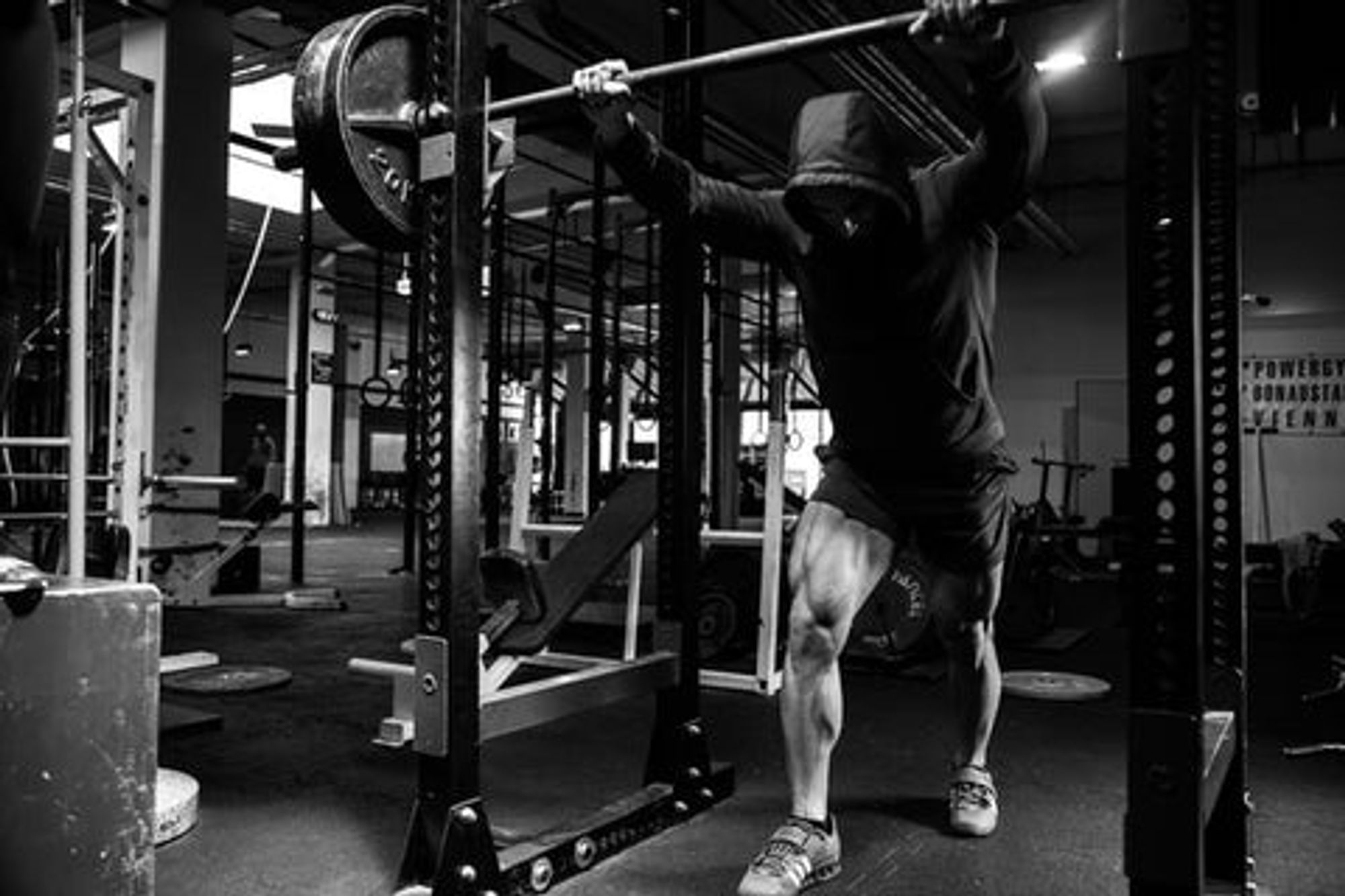
Designing The Ultimate Science-Backed Bro Split Workout Plan
Before talking about the actual exercises, we'll first just lay out the compound movement and then the accompanying body part that goes with it. This allows you to quickly see how the split is actually very similar to a traditional bro split with just tiny adjustments.
Day 2: Overhead Press 3x5 + Chest
Day 3: Bodyweight (Dips & Chin Ups) + Arms
Day 4: Squat 3x5 + Back
Day 5: Bench Press 3x5 + Shoulders
So that's what the basic layout will look like. As you see, it looks very similar to a traditional bro split with the simple addition of a heavy compound lift from another muscle group.
The compound lift is self-explanatory. However, when we get to the body part, we still want to instill some concepts when choosing exercises:
- Use more free weights
- Use cables when possible
- Use specialty sets sparingly
Now here’s what the final plan looks like.
Deadlift | 3 sets | 5 reps |
Hip Thrusts | 3 sets | 6-8 reps |
Leg Press (end each set with calf raises AMRAP) | 3 sets | 8-10 reps |
Romanian Deadlift | 3 sets | 8-10 reps (slow eccentric) |
Bulgarian Split Squat | 3 sets | 10-12 reps each side (30 sec rest between sides) |
Leg Extensions x Leg Curls (superset) | 2 sets (+ 1 drop set) | 15+ reps |
Sitting Calf Raises | 2 sets | 15+ reps |
V-Ups | 3 sets | 12-15+ reps |
Day 2
Overhead Press | 3 sets | 5 reps |
Incline Dumbbell Press | 3 sets | 6-8 reps |
Decline Barbell Press | 2 sets | 8-10 reps |
Dumbbell Pullovers | 3 sets | 8-10 reps |
Pec Dec Flys | 3 sets | 8-10 reps (one drop set) |
Cable Flys Incline/Decline (alt. weekly) | 2 sets | 12-15 reps |
Pallof Press | 3 sets | 6-8 reps per side |
Dips (weighted if needed, based on reps) | 3 sets | 5 reps |
Chin Ups (weighted if needed) | 3 sets | 5 reps |
Close Grip Bench Press | 3 sets | 6-8 reps |
EZ Bar Curl/Rope Hammer Curls (alt. weekly) | 3 sets | 8-10 reps (one drop set) |
Skull Crushers/Cable Kickback (alt. weekly) | 3 sets | 8-10 reps |
Preacher Curl/Reverse Curls (alt. weekly) | 3 sets | 8-10 reps |
Standing Overhead Rope Extension/Triceps Pushdown (alt. weekly) | 3 sets | 12-15 reps (one drop set) |
Biceps 21s | 3 sets | 7, 7, 7 |
Reverse Crunches | 3 sets | 15+ reps |
Squat | 3 sets | 5 reps |
Bent Over Row | 3 sets | 6-8 reps |
Lat Pulldown | 3 sets | 8-12 reps |
T-Bar Row (Neutral Grip) | 3 sets | 8-10 reps (one drop set) |
Standing Single Arm Cable Row | 3 sets | 8-10 reps (one drop set) |
Face Pulls | 2 sets | 12-15 reps |
Straight Arm Pulldowns | 2 sets | 12-15 reps |
Woodchoppers | 3 sets | 15+ reps |
Bench Press | 3 sets | 5 reps |
Sitting Dumbbell Shoulder Press | 3 sets | 6-8 reps |
Dumbbell Front Shrug | 3 sets | 6-8 reps |
Arnold Press | 3 sets | 8-10 reps (one drop set) |
Cable High Pulls | 3 sets | 8-10 reps |
Lateral Raise x Front Raise | 3 sets | 12-15 reps |
Cable Reverse Fly (3 directions - down, up, middle in succession) | 2 sets | 15+ reps |
Barbell Rollouts | 3 sets | 5 reps |
For the strength movements, you will rest 2:00 between each set. For all others, you will rest for 1:30. For exercises that have “+”, you can rest :30-1:00. The goal for these is to use light weight to get a lot of volume and a strong pump.
Plus, always remember to get a good dynamic warm-up in before you start training!
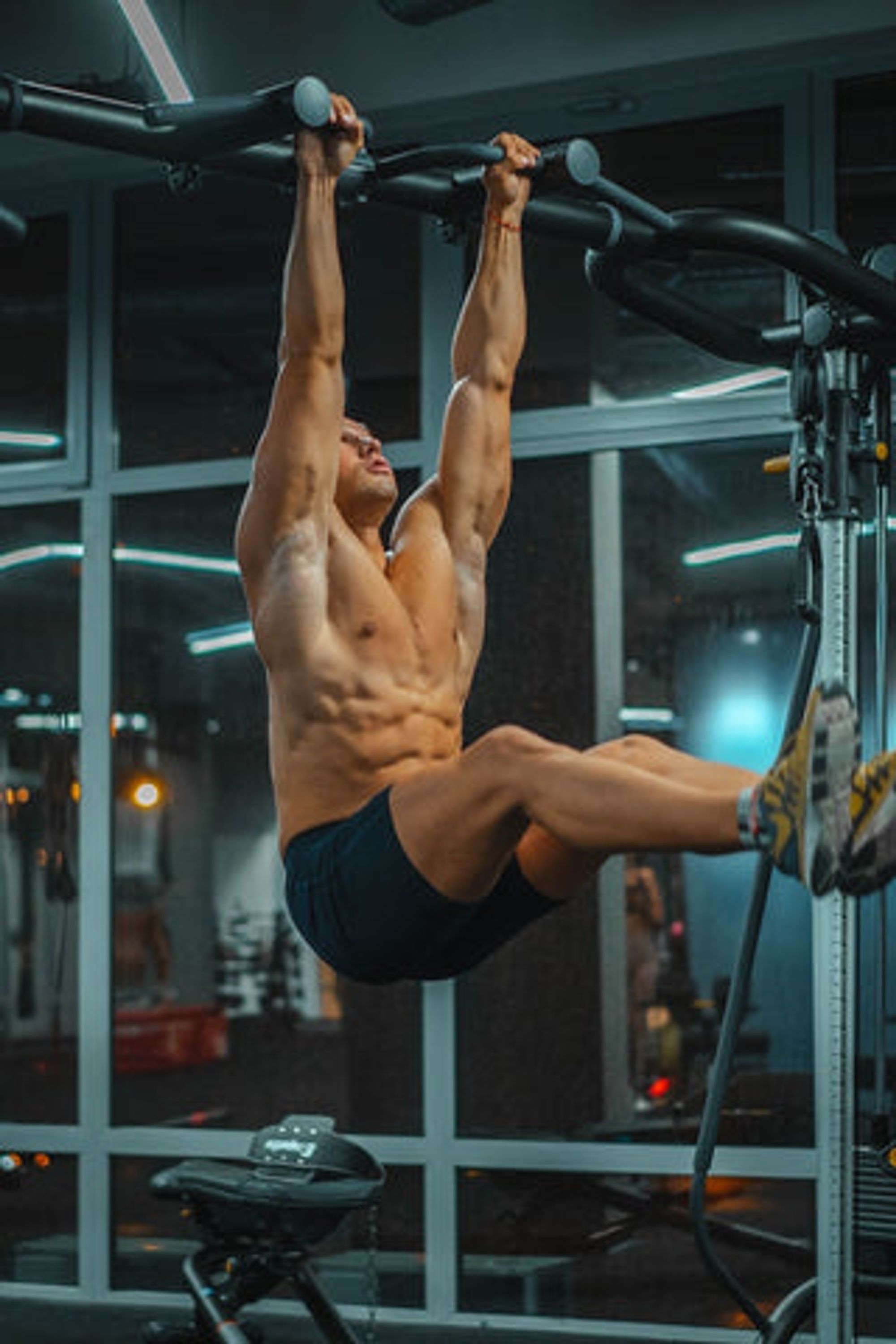
The Best Way To Progress Using A Bro Split
Even bros need to use progressive overload. It doesn't matter who is lifting or what type of split they are doing. Progressive overload will always be the underlying foundation of any program, as it is what forces your bodies to adapt. That being said, it may look a little different using a bro split.
Remember that there are two parts of each session; the strength component with a heavy compound lift and then the bro section where you train a body part. You will progress differently with each section.
For the strength movement, your goal will always be to get more weight on the bar. Therefore, these lifts will progress by primarily increasing the load.
For the bro section, you will be using what we like to call a ladder. You see that the lifts have a range of reps; this is because at first, you will want to increase the reps to the upper end. Once you hit the upper end, you will then increase the load. This is because hypertrophy is the main goal and more volume drives hypertrophy.
You can increase weight slightly for the specialty sets and higher rep isolation, but the main goal is bringing your muscles close to failure.
And just another reminder, hypertrophy can help build strength while strength can help build muscle hypertrophy. They work on a spectrum so we just use these words to identify a movement based on their main purpose. You just don’t want to get stuck in boxes thinking you can’t build muscle unless you do at least 8 reps.
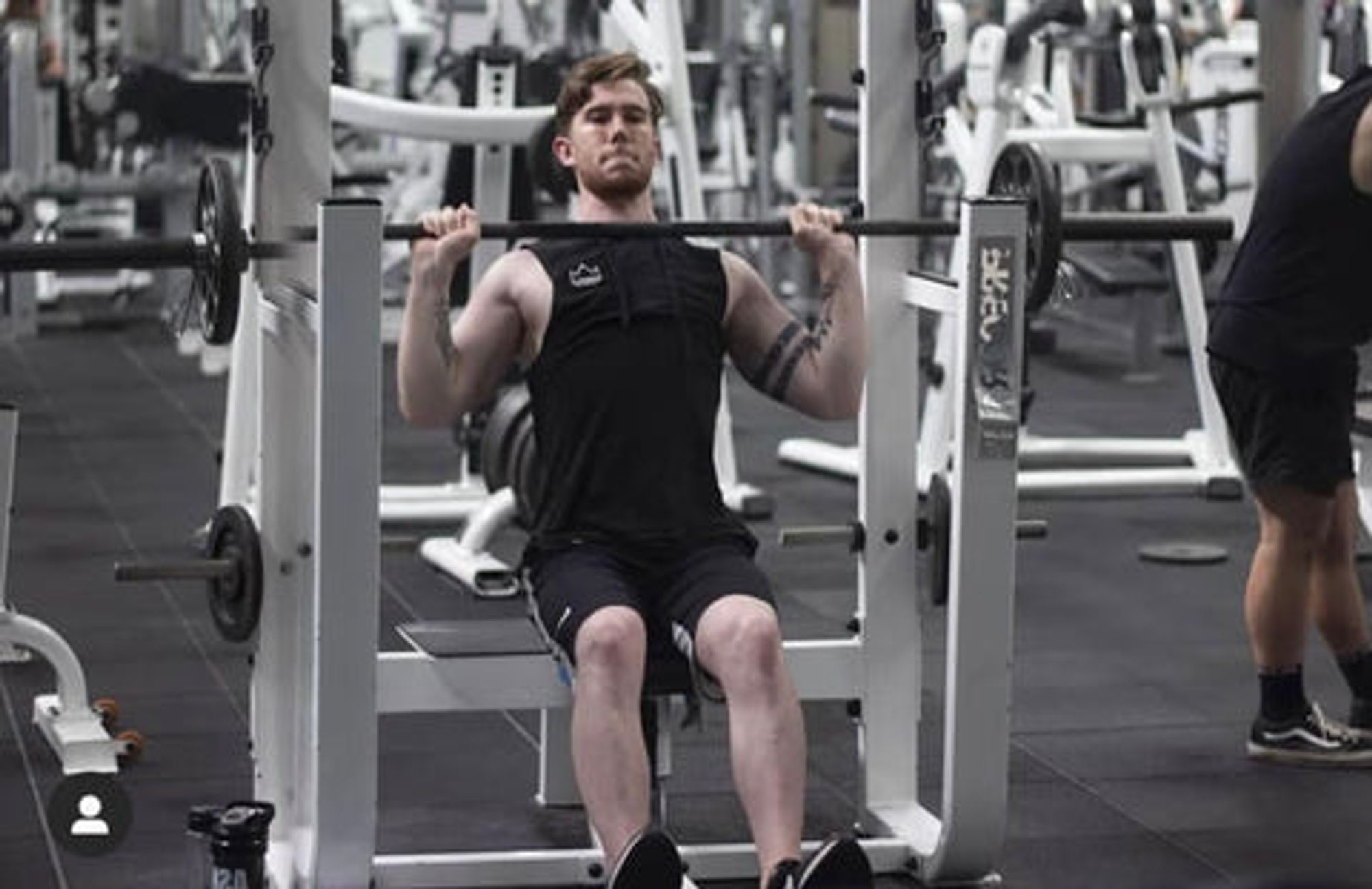
Science And Bro Splits
Despite the widespread abuse thrown at bro splits, they really aren't that bad. Plus, any of the problems that do exist can be solved quite easily while still maintaining that bro split vibe; as we just did. When it comes to fixing programs, you don't want to throw the baby out with the bathwater. Oftentimes, there are variables or concepts of a program that people like "just because". With bro splits, it's the simplicity of training one muscle group per day and getting a serious pump. You see that these concepts are still intact with a couple minor adjustments. Therefore, you still have a bro split, but it's just a little bit better bro split. It's a bro split backed by science.
Check out these other awesome training programs too:
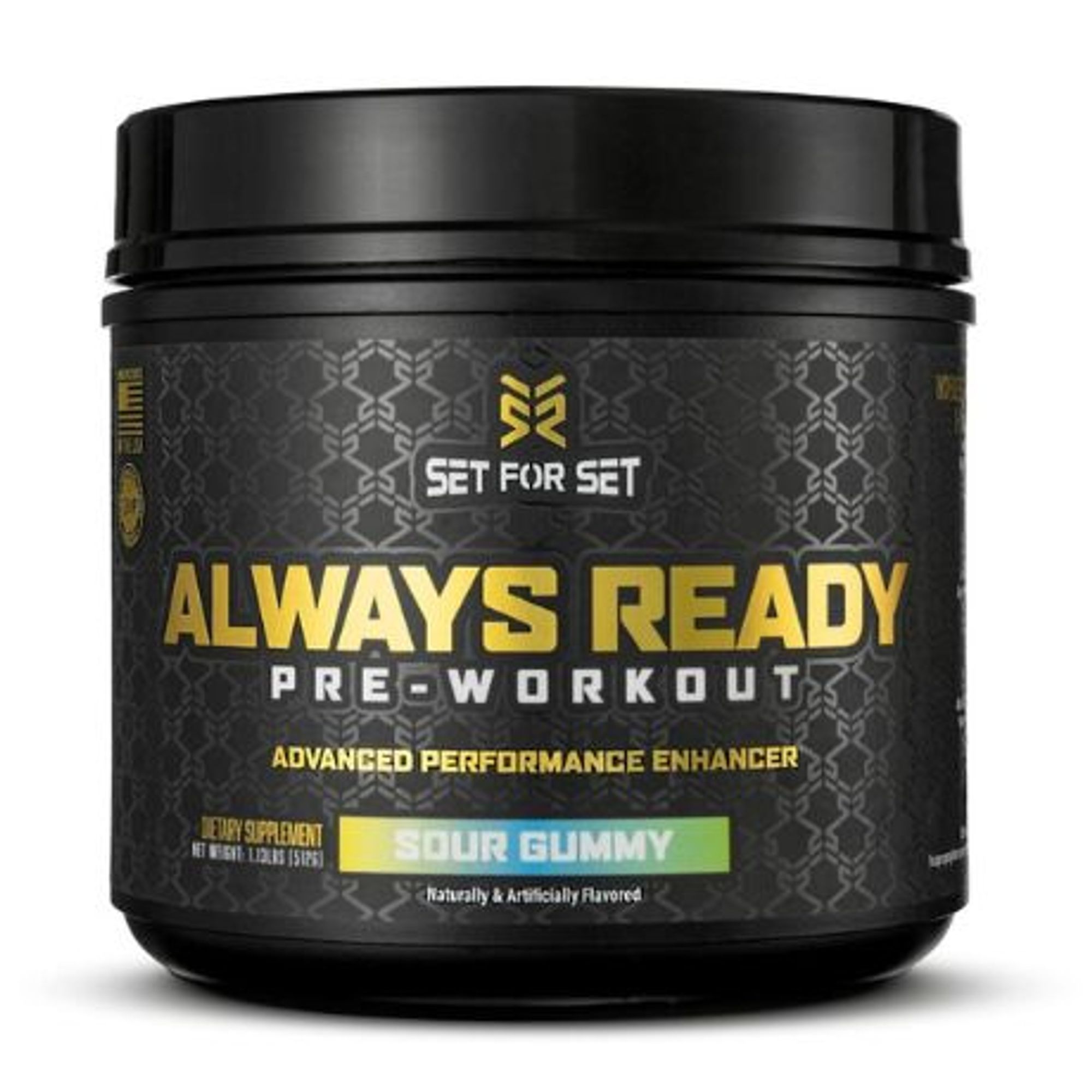
SET FOR SET
@KONSTANTINE – Thanks! Do them as a triset. Just move the cable pulley along the tower to the correct height after each set within the triset, until you finish all three. Then rest as needed, and do one more time. If you need to rest a bit between down, middle and up, that’s fine. Also go light and focus on really hitting the rear delts.
Konstantine
Great plan.
Can you please elaborate on how to perform day 5’s “cable reverse fly 3 directions – down, up, middle in succession “?
Thanks, I’d really appreciate it!
Leave a comment
Comments will be approved before showing up.